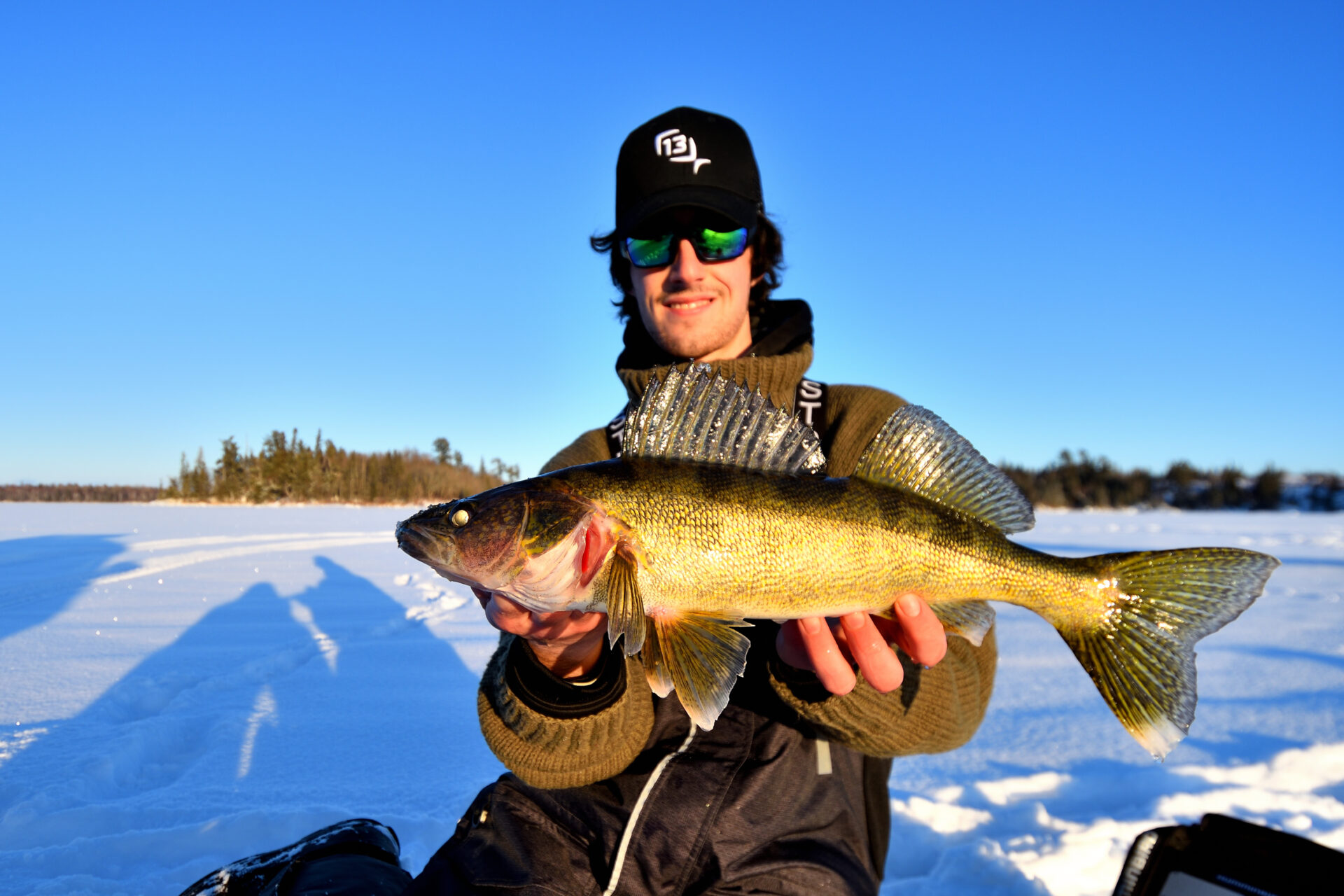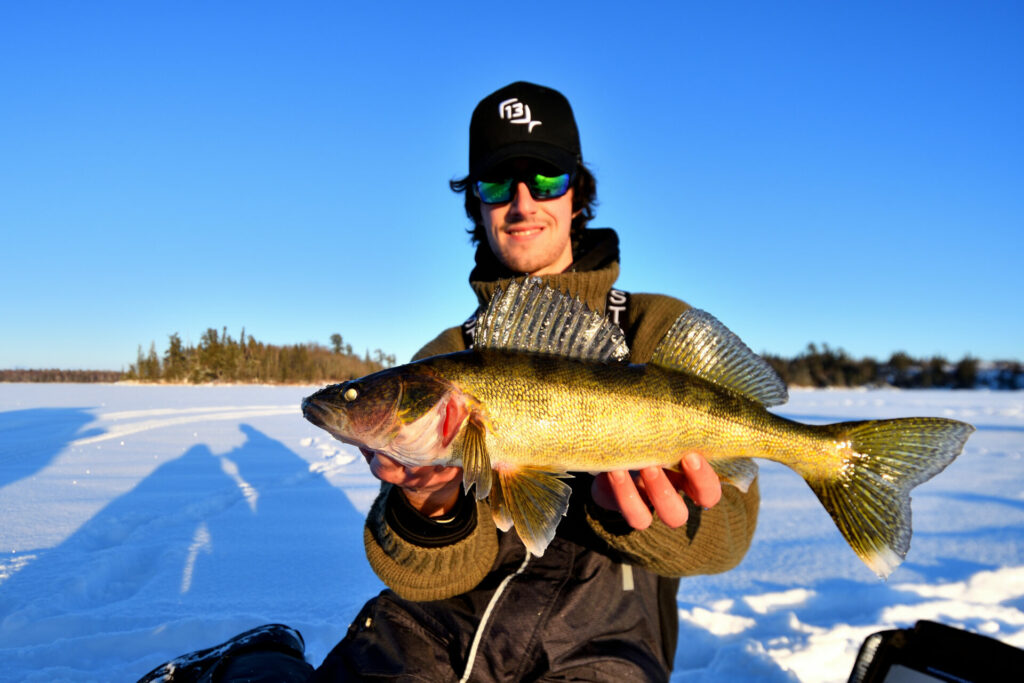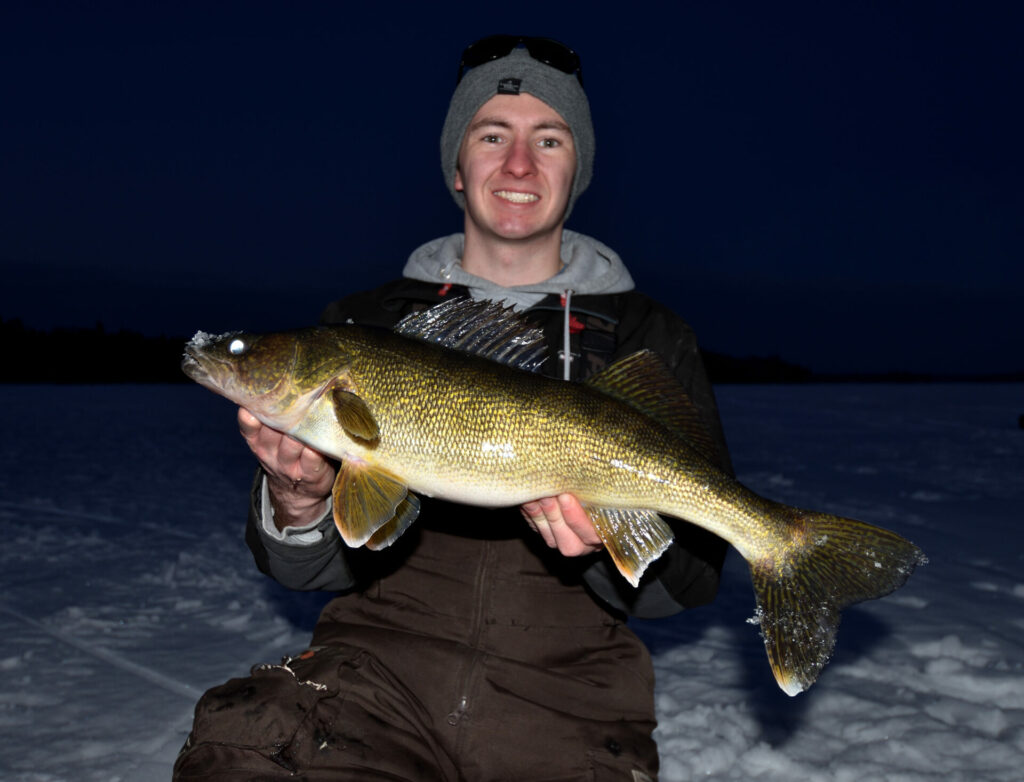DEAD TO RIGHTS WINTER WALLEYES
Advertisement
Winter walleye anglers tend to forget that the fish react to weather and pressure changes in much the same ways they do in the summer—maybe even more so. Which is to say, they can become neutral and negative in an awful hurry. Fishing pressure, too, can take a toll, causing the walleye on your sonar screen to become tight lipped, especially on popular community fishing holes. So it’s essential to know how to finesse them up to the surface, especially during the less-than-peak midday hours. And in my experience, there’s no better way to do it than with a dedicated dead-stick presentation.
Advertisement
I know what you’re thinking: it’s boring watching a set line. But I equate it to slip-float fishing for walleyes in the summer. You just have to do it if you want to get the net wet, and enjoy fish for dinner. The fact that you can still jig a second line with a much more aggressive Jigging Rap or spoon in the winter is an added bonus, minimizing the amount of time you spend twiddling your fingers waiting for the fish to bite.
The best deadstick rods all feature one thing in common: a super-soft noodly tip—the spongier the better. I have a couple rods with such sensitive tips that when I put a minnow on the end of the line and lower it down to the bottom, the tip throbs as the baitfish struggles. On a couple of other deadstick rods, I’ve added a spring bobber that features a bright florescent orange bead on the tip that I can see 20, 30 even 40 feet away.
Advertisement
Light line further compliments your deadstick setup, with 4-, 5- and 6-pound test being the strengths I use most often. You wouldn’t think a one pound difference would change much, but trust me, it does. So use the lightest line you can get with, away relative to the size of the minnows you’re using and the size of the fish you hope to catch.
Finally, of course, there is the business end of the setup— the jig or lure. Over many years I’ve found that day in and day out, a 1/8th to 1/16th ounce vertical jig (not the standard horizontal lead head) rules the deadstick roost. My favourite is the HT Jig A Whopper Hawger (and Hawger Lazer) jig. Spoons like the 1 1/2-inch Williams Wabler and VMC Tingler (experiment with different colour options) are also good. But I doctor both by removing the treble hook and replacing it with an ultra-thin, razor sharp single hook.
Advertisement
The reason for the fine-wire hook is apparent when you slide the tip under the skin, along the backbone, of the liveliest minnow in the bucket. It’s like a sliver—not a spike—with the hook point emerging toward the head.
When you attach the minnow this way, it can easily swim around when you lower it to the bottom. Yet it doesn’t swim so much that a sluggish midday walleye, swimming in frigid water won’t chase it down.
There’s one final key deadstick takeaway. Don’t expect to see your rod, laying across a pail so the line is going down the hole, go berserk when a walleye takes the bait. Rather expect to see the tip bend over ever so gently and steadily. This is why you want the top third of the rod to have the action of a wet noodle.
Good luck out on the ice.



